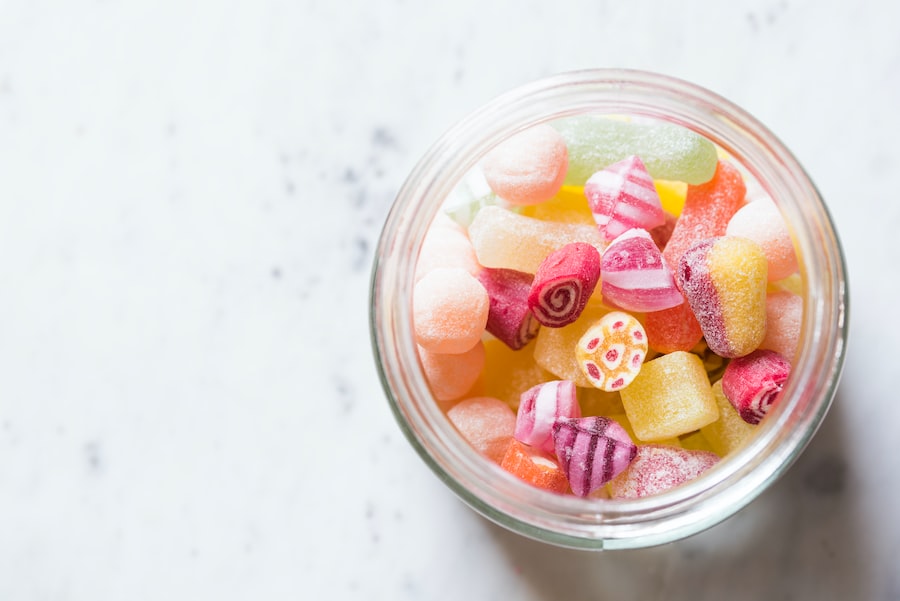Harvesting Sweet Corn: How to Tell When It’s Ripe and Ready to Pick

Sweet corn is a popular and beloved vegetable that is enjoyed by people all over the world. Its sweet and juicy kernels make it a staple in many dishes, from salads to soups to side dishes. However, in order to fully enjoy the deliciousness of sweet corn, it is crucial to harvest it at the right time. Harvesting sweet corn at the peak of its ripeness ensures that it is at its most flavorful and tender state. In this article, we will explore the growth cycle of sweet corn, the factors that affect its maturity, and how to recognize the signs of ripeness.
Key Takeaways
- Sweet corn goes through a growth cycle that includes germination, vegetative growth, tasseling, and pollination.
- Factors affecting sweet corn maturity include temperature, moisture, and sunlight.
- Signs of sweet corn ripeness include the color of the husks, the texture of the kernels, and the aroma.
- Checking the kernel development involves peeling back the husks and examining the size and shape of the kernels.
- Measuring the sweetness level of sweet corn can be done by tasting a kernel or using a refractometer.
Understanding the Growth Cycle of Sweet Corn
Sweet corn goes through several stages of growth before it is ready to be harvested. The first stage is germination, where the seed absorbs water and begins to sprout. This is followed by the vegetative stage, where the plant grows leaves and stems. The next stage is tasseling, where the plant produces a tassel-like structure at the top. This is followed by pollination, where the tassels release pollen that fertilizes the silks on the ears of corn. Finally, the ears of corn develop and mature, ready to be harvested.
The timeline for sweet corn growth varies depending on the variety and environmental conditions. On average, it takes about 60 to 100 days for sweet corn to reach maturity from planting. Factors such as temperature, sunlight, and moisture levels can affect the growth rate of sweet corn. It is important to monitor these factors and adjust cultural practices accordingly to ensure optimal growth and maturity.
Factors Affecting Sweet Corn Maturity
Several factors can affect the maturity of sweet corn, including environmental factors, genetic factors, and cultural practices.
Environmental factors such as temperature and sunlight play a crucial role in sweet corn maturity. Sweet corn requires warm temperatures for optimal growth and development. If temperatures are too low, the growth rate of sweet corn may be slowed down, resulting in delayed maturity. Similarly, insufficient sunlight can also hinder the growth and maturity of sweet corn. It is important to provide the right environmental conditions for sweet corn to ensure timely maturity.
Genetic factors also play a role in sweet corn maturity. Different varieties of sweet corn have different maturity rates. Some varieties mature faster than others, so it is important to choose a variety that is suitable for your growing conditions and desired harvest time. Additionally, genetic traits such as sweetness and tenderness can also affect the overall quality and maturity of sweet corn.
Cultural practices such as fertilization, irrigation, and weed control can also impact sweet corn maturity. Proper fertilization ensures that the plants have the necessary nutrients for growth and development. Adequate irrigation is crucial to prevent water stress, which can hinder the growth and maturity of sweet corn. Effective weed control is also important to prevent competition for nutrients and resources.
Recognizing the Signs of Sweet Corn Ripeness
| Signs of Sweet Corn Ripeness | Description |
|---|---|
| Color | The husks should be bright green and tightly wrapped around the ear. The silk should be dry and brown. |
| Kernel Plumpness | The kernels should be plump and tightly packed together. If you press a kernel with your fingernail, it should release a milky liquid. |
| Ear Size | The ear should feel heavy for its size and be filled out to the tip. A small ear may not be fully developed. |
| Ear Texture | The ear should feel firm and not too soft or mushy. If it feels too hard, it may be overripe. |
There are several cues that can help determine if sweet corn is ripe and ready to be harvested. These cues include visual cues, tactile cues, and aromatic cues.
Visual cues are one of the most obvious signs of sweet corn ripeness. Ripe sweet corn will have plump and well-filled kernels that are tightly packed together. The kernels should be a bright and vibrant yellow color. If the kernels are pale or have a milky appearance, it may indicate that the sweet corn is not fully ripe yet.
Tactile cues can also help determine if sweet corn is ripe. Ripe sweet corn should feel firm but not hard when gently squeezed. The kernels should be plump and filled with juice. If the kernels feel soft or mushy, it may indicate that the sweet corn is overripe.
Aromatic cues can also provide valuable information about sweet corn ripeness. Ripe sweet corn should have a sweet and slightly earthy aroma. If the sweet corn has a strong or unpleasant smell, it may indicate that it is past its prime.
Checking the Kernel Development of Sweet Corn
Checking the kernel development of sweet corn is another important step in determining its maturity. The kernels should be well-developed and filled with a milky substance. To check for kernel development, gently peel back the husk and examine the kernels. If the kernels are small and underdeveloped, it may indicate that the sweet corn is not yet ripe. On the other hand, if the kernels are large and plump, it is a good indication that the sweet corn is ready to be harvested.
Kernel development is important because it directly affects the sweetness and tenderness of sweet corn. Underdeveloped kernels will not have reached their full sweetness potential, while overdeveloped kernels may be too starchy and less sweet. It is important to harvest sweet corn at the right time to ensure optimal kernel development and flavor.
Measuring the Sweetness Level of Sweet Corn

The sweetness level of sweet corn can be measured using a tool called a refractometer. A refractometer measures the sugar content in a liquid by measuring how light bends as it passes through the liquid. To measure the sweetness level of sweet corn, extract some juice from a kernel using a knife or your fingernail and place it on the refractometer. The refractometer will provide a reading that indicates the sugar content of the sweet corn.
Several factors can affect the sweetness level of sweet corn. Genetic factors play a significant role in determining the natural sweetness of sweet corn. Some varieties are naturally sweeter than others. Environmental factors such as temperature and sunlight can also affect the sweetness level of sweet corn. Sweet corn grown in cooler temperatures may have lower sugar content compared to those grown in warmer temperatures.
Examining the Husks and Silks of Sweet Corn
The husks and silks of sweet corn can provide valuable information about its maturity. The husks should be a vibrant green color and tightly wrapped around the ear of corn. If the husks are yellow or brown, it may indicate that the sweet corn is past its prime. The silks should be brown and dry, indicating that pollination has occurred. If the silks are still green or moist, it may indicate that the sweet corn is not yet fully mature.
The husks and silks play an important role in sweet corn maturity. The husks protect the ear of corn from pests and diseases, while the silks facilitate pollination. It is important to examine the husks and silks to ensure that sweet corn is at its optimal maturity for harvest.
Feeling the Texture of Sweet Corn Kernels
Feeling the texture of sweet corn kernels can also provide valuable information about its maturity. Ripe sweet corn kernels should feel plump and firm when gently pressed. The kernels should be filled with juice and have a slight crunch when bitten into. If the kernels feel soft or mushy, it may indicate that the sweet corn is overripe.
Texture is an important aspect of sweet corn maturity because it affects the overall eating experience. Overripe sweet corn may have a mealy or mushy texture, which can be less enjoyable to eat. It is important to harvest sweet corn at the right time to ensure optimal texture and flavor.
Smelling the Aroma of Sweet Corn
Smelling the aroma of sweet corn can provide valuable information about its maturity. Ripe sweet corn should have a sweet and slightly earthy aroma. If the sweet corn has a strong or unpleasant smell, it may indicate that it is past its prime.
Aroma is an important aspect of sweet corn maturity because it contributes to its overall flavor profile. The aroma of sweet corn can enhance the eating experience and make it more enjoyable. It is important to harvest sweet corn at the right time to ensure optimal aroma and flavor.
Testing the Tenderness of Sweet Corn
Testing the tenderness of sweet corn is another important step in determining its maturity. Ripe sweet corn should be tender and easy to bite into. The kernels should have a slight crunch and should not be tough or chewy. If the kernels are tough or chewy, it may indicate that the sweet corn is not yet fully mature.
Tenderness is an important aspect of sweet corn maturity because it affects the overall eating experience. Tough or chewy sweet corn can be less enjoyable to eat. It is important to harvest sweet corn at the right time to ensure optimal tenderness and flavor.
Harvesting Sweet Corn at the Right Time
Harvesting sweet corn at the right time is crucial to ensure optimal flavor and tenderness. The best time to harvest sweet corn is when the kernels are fully developed, plump, and filled with juice. The husks should be a vibrant green color and tightly wrapped around the ear of corn. The silks should be brown and dry, indicating that pollination has occurred.
To harvest sweet corn, gently pull back the husks and examine the kernels. If they are well-developed and filled with juice, use a sharp knife to cut the ear of corn from the stalk. It is important to harvest sweet corn as soon as it reaches its peak ripeness to ensure maximum flavor and tenderness.
Harvesting sweet corn at the right time is crucial to ensure optimal flavor, tenderness, and overall quality. By understanding the growth cycle of sweet corn, recognizing the signs of ripeness, and checking for kernel development, sweetness level, husk and silk condition, texture, aroma, and tenderness, you can determine when it is the best time to harvest sweet corn. By following these guidelines, you can enjoy the deliciousness of sweet corn at its peak ripeness.



